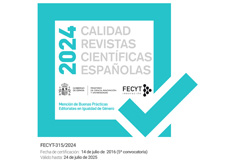Velázquez Soriano, I. y Espinosa Espinosa (eds.) (2021). Epigraphy in the Digital Age. Opportunities and Challenges in the Recording, Analysis and Dissemination of Inscriptions. Oxford: Archaeopress. ISBN: 978-1-7869-987-6, 240 págs
DOI:
https://doi.org/10.12795/spal.2022.i31.31Resumen
Reseña del libro: Epigraphy in the Digital Age. Opportunities and Challenges in the Recording, Analysis and Dissemination of Inscriptions
Descargas
Citas
Elliot, T., Heath, S. y Muccigrosso, J. (eds.) (2014), Current Practice in Linked Open Data for the Ancient World, Nueva York: Institute for the Study of the Ancient World. http://doi.org/2333.1/gxd256w7
Orlandi, S., Santucci, R., Casarosa, V. y Liuzzo, P.M. (eds.) (2014), Information Technologies for Epigraphy and Cultural Heritage Proceedings of the First EAGLE International Conference, Roma: Sapienza Università Editrice, pp. 133-141.
Pires, H., Martínez Rubio, J. y Elorza Arana, A. (2015), “Techniques for revealing 3D hidden archeological features: Morphological Residual Models as virtual-polynomial texture maps”, The International Archives of the Photogrammetry, Remote Sensing and Spatial Information Sciences 40/5, pp. 415-421. https://doi.org/10.5194/isprsarchives-XL-5-W4-415-2015
Romanello, M. y Bodard, G. (2016), Digital Classics Outside the Echo-Chamber. Teaching, Knowledge Exchange & Public Engagement, Londres: Ubiquity Press.
Publicado
Cómo citar
Número
Sección
Licencia
Derechos de autor 2022 SPAL - Revista de Prehistoria y Arqueología

Esta obra está bajo una licencia internacional Creative Commons Atribución-NoComercial-SinDerivadas 4.0.









